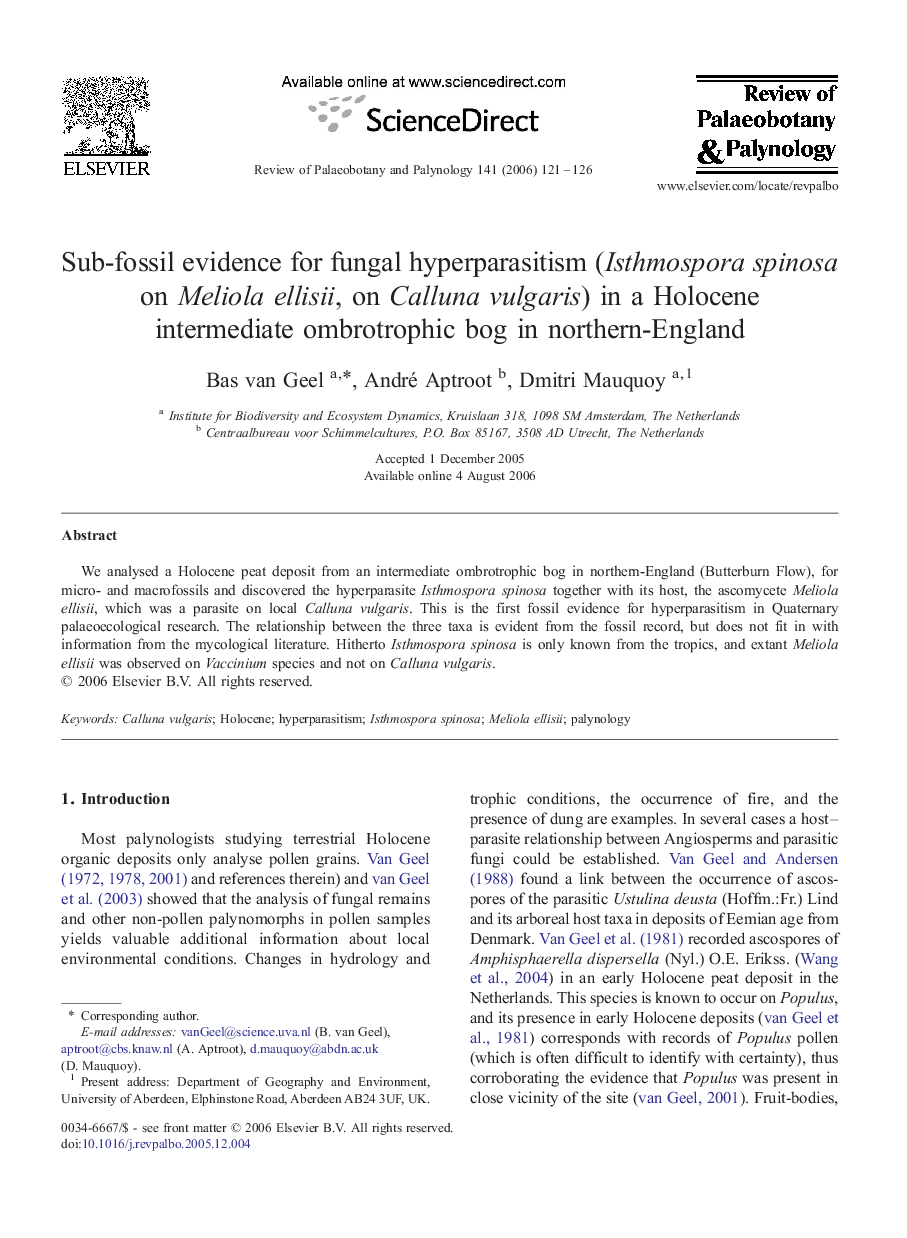| Article ID | Journal | Published Year | Pages | File Type |
|---|---|---|---|---|
| 4751248 | Review of Palaeobotany and Palynology | 2006 | 6 Pages |
Abstract
We analysed a Holocene peat deposit from an intermediate ombrotrophic bog in northern-England (Butterburn Flow), for micro- and macrofossils and discovered the hyperparasite Isthmospora spinosa together with its host, the ascomycete Meliola ellisii, which was a parasite on local Calluna vulgaris. This is the first fossil evidence for hyperparasitism in Quaternary palaeoecological research. The relationship between the three taxa is evident from the fossil record, but does not fit in with information from the mycological literature. Hitherto Isthmospora spinosa is only known from the tropics, and extant Meliola ellisii was observed on Vaccinium species and not on Calluna vulgaris.
Related Topics
Physical Sciences and Engineering
Earth and Planetary Sciences
Palaeontology
Authors
Bas van Geel, André Aptroot, Dmitri Mauquoy,
